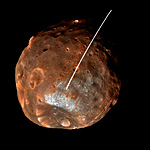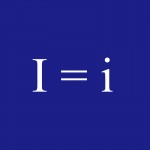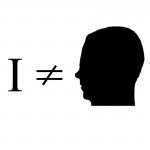This is the second episode of “Phoenix,” a short fiction about an improved kind of life insurance. If you haven’t read episode 1, start here.
 That was my first taste of problems involved with using my life insurance policy. I didn’t think they were all that bad, considering the alternative. It was only after I died a second time that I felt a tiny bit concerned, because it was so stupid. Even now, now that the pattern is obvious, I have trouble understanding how I could have done it. Back then, I couldn’t begin to understand. My log entry after I saw the evidence is pure confusion – just screaming question marks.
That was my first taste of problems involved with using my life insurance policy. I didn’t think they were all that bad, considering the alternative. It was only after I died a second time that I felt a tiny bit concerned, because it was so stupid. Even now, now that the pattern is obvious, I have trouble understanding how I could have done it. Back then, I couldn’t begin to understand. My log entry after I saw the evidence is pure confusion – just screaming question marks.
I’d survived a year and a half since the volcano. By that time I had lots of experience and was diving safely. In fact I was getting bored, and looking at other sports. Anyway, this is what happened, as well as I’ve been able to reconstruct it. I needed the cruiser for a date with a girl on some other station so I asked Dad well in advance and he agreed. Fine. Eight o’clock Friday night I climbed in and the fuel-oxygen was down to zip. Almost. The spare tank was empty too. How could Dad let that happen? I was probably late, probably frustrated. I drove that thing into a station and traded in the spare. The attendant was pretty young – I saw him at the inquest later – didn’t know much. He gave me a tank with the wrong fitting. And I didn’t notice. Continue reading “Phoenix – episode 2”



 We are not Cartesian egos. We are not biological organisms either.
We are not Cartesian egos. We are not biological organisms either.
 Audiences of the movie
Audiences of the movie  Imagine, in the early days of books, a small library consisting entirely of original manuscripts. Some of them are very old, and have been attacked by mice. Some have deteriorated so much that their pages crumble to dust when the custodian of the library tries to read them. He mourns the loss of these books, and contemplates the inevitable decay of the remaining books with sorrow. To be sure, new manuscripts are occasionally added to the library, but they cannot replace the volumes that are lost forever. This goes on until, one day, the young assistant librarian has an idea. “This book will be unreadable in five years,” he tells his elder. “But I can read it now. If I copy the words of this book onto sheets of new vellum, and bind them in a strong new binding, we will be able to read it for many decades to come.” The old librarian tenderly strokes the cracked spine of the crumbling volume, and shakes his head. “What good is a copy? It wouldn’t be the same book.”
Imagine, in the early days of books, a small library consisting entirely of original manuscripts. Some of them are very old, and have been attacked by mice. Some have deteriorated so much that their pages crumble to dust when the custodian of the library tries to read them. He mourns the loss of these books, and contemplates the inevitable decay of the remaining books with sorrow. To be sure, new manuscripts are occasionally added to the library, but they cannot replace the volumes that are lost forever. This goes on until, one day, the young assistant librarian has an idea. “This book will be unreadable in five years,” he tells his elder. “But I can read it now. If I copy the words of this book onto sheets of new vellum, and bind them in a strong new binding, we will be able to read it for many decades to come.” The old librarian tenderly strokes the cracked spine of the crumbling volume, and shakes his head. “What good is a copy? It wouldn’t be the same book.”  Part Three of
Part Three of  In the
In the  In the story
In the story